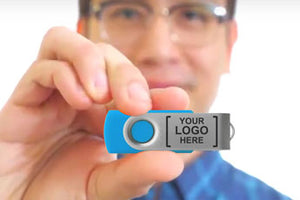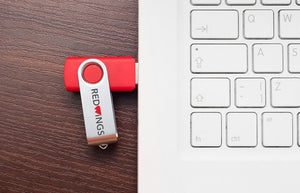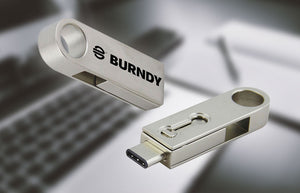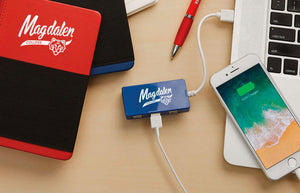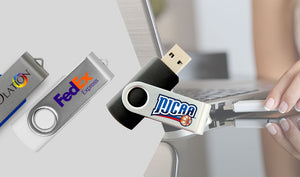The Differences Between Mini USB, Micro USB, and USB-C Explained
USB cables, cords, and ports are ubiquitous nowadays. You are probably familiar with a variety of USB functions as USB connectors are required to charge most phones. They are also frequently used in other applications like USB flash drives.
What you might not have known is that there are many other USB types than the traditional rectangular one. Mini USB, micro USB, and “Type C” USB connectors are all used for a variety of different reasons. Whether it’s charging or connecting devices, or simply uploading data, you need to know which one to use.
You have also probably come across these USB types at one point or another. You probably didn't even recognize them as USB-related. But, how do you distinguish between micro vs mini USB (and Type C connectors), and what functionality do they offer?

What Are USB Connector Types?
First of all, it’s important to understand what exactly a USB connector type is. Many people might be reading this ask themselves, “Are there really more types of USB connectors?” The answer, of course, is yes.
The most recognizable USB connector type (the rectangular one mentioned above) is known as “Type A.” It has been around since the ‘90s, and you have undoubtedly encountered these USBs at some point or another.
As their name suggests, mini and micro USBs are smaller than the regular Type A USB connector. They were introduced to the market in 2005 and 2007 respectively. Both were predominately used for charging mobile phones and other devices like cameras, but they can also be used for data transfer.
Type C connectors are also smaller than their standard Type A counterparts, but they are essentially an updated version of the Type A connector. Type C connectors can upload and download data simultaneously, a feature that is absent with Type A connectors.

You may also have noticed that we seem to have skipped over any discussion of Type B connectors. These square-shaped connectors do exist, but they are primarily used to connect appliances like printers or copy machines to computers or other devices.
Also, for the sake of clarity, we should mention the “Lightning” cable. Lightning connectors are Apple’s proprietary charging option, although they are not categorized as USBs. They are slim and small like micro and mini USB connectors, but they are not the same thing and are only compatible with Apple devices.
Now that we’ve got that out of the way, let’s take a look at a few specifics.
Micro USB vs Mini USB
What are the differences between micro USBs and mini USBs? Let’s first discuss the earliest version: the mini USB. The mini USB was introduced in 2005 and was one of the first miniaturized USB forms to be released onto the market. It is roughly in the shape of an anvil and has a 5-pin connector.
 At its outset, the mini USB was used for a variety of devices including mp3 players, digital cameras, and mobile phones (including Blackberry, Motorola, and HTC devices). Although it wasn’t quite as powerful as the original Type A connector, the mini USB was lauded for its conveniently small size at around 3 x 7 mm. It also has 5,000 connect-disconnect cycles, meaning it can be plugged in and removed 5,000 times before wearing down.
At its outset, the mini USB was used for a variety of devices including mp3 players, digital cameras, and mobile phones (including Blackberry, Motorola, and HTC devices). Although it wasn’t quite as powerful as the original Type A connector, the mini USB was lauded for its conveniently small size at around 3 x 7 mm. It also has 5,000 connect-disconnect cycles, meaning it can be plugged in and removed 5,000 times before wearing down.
The micro USB, by contrast, was released two years later, and improved on both the functionality and convenience of the mini USB. For starters, the micro USB also has five pins, but its fifth pin (dubbed the “ID pin”) functions as both an A and B Type connector, providing broader value. The mini USB’s ID pin, by contrast, provides little to no function.
The micro USB is also smaller at around 6.85 x 1.8 mm and is shaped differently with a rounded top and a flat bottom. It is more durable with 10,000 connect-disconnect cycles and provides faster transfer rates at around 480 megabits per second. Micro USB ports are frequently seen on Android mobile phones and tablets and numerous other devices, including:
- Digital cameras
- GPS devices
- Video game controllers
In addition to all that, micro USBs support USB On The Go (USB OTG) which is a feature that permits smartphones or tablets to function as a host for accessories like a mouse, keyboard, or USB flash drive. Essentially, you can connect to and use external devices on your smartphone or tablet. The mini USB does not have this option.
After all this, you might be thinking that the micro vs mini USB debate is a bit one-sided, and you wouldn’t be wrong. Mini USB technology is technically referred to as “deprecated.” This is a fancy way of saying that it can still be used, but manufacturers do not recommend it because it is functionally out-of-date in comparison to micro USB tech.
Still, certain products continue to have a mini USB port and connector, keeping this option from being completely obsolete.
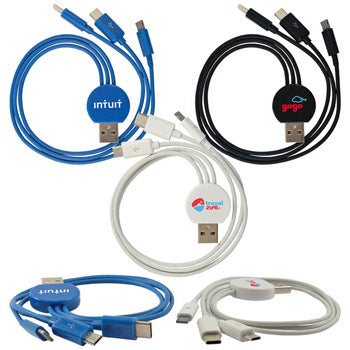
What About USB Type C?
USB Type C (also simply referred to as USB-C) is considered the heir apparent to the original USB Type A. Most prognosticators believe that the USB Type A that we all know and love will be all but phased out in the next 5 to 10 years.
For now, however, USB Type C receptacles are still relatively rare. You can find them on slim laptops, certain Android phones, video gaming controllers, and numerous other devices. But, most people still recognize Type A as the reigning USB champ.
So, is there a comparison when it comes to the “micro USB vs USB C” matchup? In some ways, there is. Both cables are often equipped with the same connector on both sides of a cable, meaning you don’t have to fumble with your cords anymore. The connector shapes do look somewhat similar, but the USB Type C is more oval and can be plugged in in either direction.
 That’s where most of the comparisons end. USB Type C is supposed to be the wunderkind of USB technology. It can theoretically replace a whole host of connector cables including:
That’s where most of the comparisons end. USB Type C is supposed to be the wunderkind of USB technology. It can theoretically replace a whole host of connector cables including:
- Printer cables
- Laptop charging cables
- Digital camera cables
- HDMI cables
- Smartphone charging cables
- Gaming console cables
- Scanner and fax cables
While micro USB cables can do a lot, they can’t go that far. In more technical terms, USB-C connectors have a transfer rate of between 5 and 10 gigabits per second and can provide 100 watts of charging power at any given time. Many Android phones are already using USB Type C as their go-to charging method.
Of course, many smartphones and other devices still use the micro USB ports. It’s also fair to say that USB Type C hasn’t caught on quite as quickly as some experts expected. So, clearly, both have their benefits.
USB-Related Promotional Products
You may be wondering what all of this has to do with you. There are many promotional products that use USB ports or connectors. If you want to impress your target demographic, then you can opt for the most relevant option for them. Here are a few USB-related items you can use as promotional products.
Power Banks
Of course, power banks are some of the most relevant promotional items on the market. They provide around 900 impressions throughout their lifetimes according to a 2019 Advertising Specialty Institute study. Power banks simply provide a mobile charging solution that most people desperately need.
There are also plenty of different models available at iPromo. For instance, the Volta Power Bank Portable Charger provides 10,000 mAh of power and possesses two standard USB ports and micro USB port. If you have the type of audience that might need USB Type C charging capabilities, we have another 4,000 mAh model that features both a USB-C and a micro USB port
Also, if you want to cut out the confusion of USB types altogether, you can just go with the 4-in-1 Flip 4000 mAh Portable Power Bank Charger. It has a standard USB port, Type C port, a micro USB port, and a Lightning cable port, to boot.
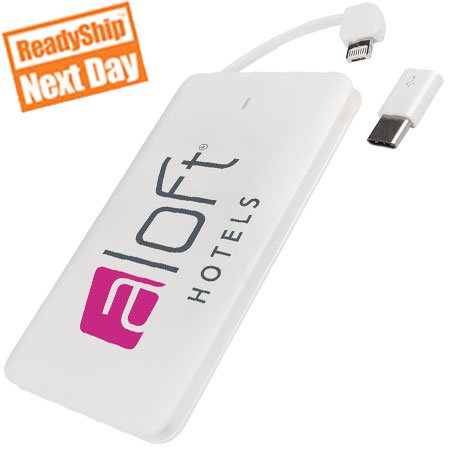
Charging Cables
What makes a power bank (or any charger for that matter) function? Charging cables. If you are unsure what type of phones or devices your intended audience has, then go with charging cables. Our friends at iPromo have a 4-in-1 option that even has a mini USB cable and a 3-in-1 option, as well. Charging cables are always wearing out or getting lost, and you can certainly help your prospective customers in that regard.
USB Flash Drives
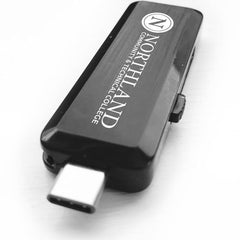 Flash drives are convenient marketing tools and simply great gifts. Most flash drives come with the standard rectangular USB connector, but there are also models that offer both. Because USB Type C connectors haven’t achieved the popularity of their predecessors, it’s always a good idea to offer both options with flash drives.
Flash drives are convenient marketing tools and simply great gifts. Most flash drives come with the standard rectangular USB connector, but there are also models that offer both. Because USB Type C connectors haven’t achieved the popularity of their predecessors, it’s always a good idea to offer both options with flash drives.
Type A/Type C USB flash drives are typically designed as two-headed monsters. For instance, the C-Spin Type-C USB Flash Drive has a Type A connector on one side and a Type C on the other, and you can simply spin the device to pick whichever connector type you need.
In Conclusion
If you want to provide free USB-related gifts to your clientele, it’s a good idea to know what USB version they will use the most. If you have any questions or you want to order any mini USB, micro USB, or Type C USB devices, contact a promotions specialist today.
CONTACT US
- choosing a selection results in a full page refresh
 Thanksgiving sale! Use code:
Thanksgiving sale! Use code:  Black Friday Sale! Use code:
Black Friday Sale! Use code:  Cyber Monday! Use code:
Cyber Monday! Use code:  Giving Tuesday! For every order we will donate a toy to TOYS FOR TOTS
Giving Tuesday! For every order we will donate a toy to TOYS FOR TOTS
